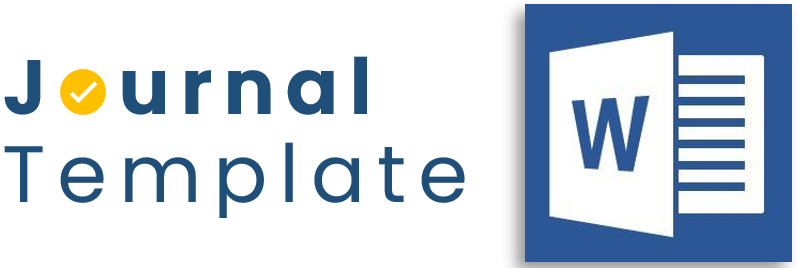Implementation of Machine Learning For Indonesian Sign Language Recognition Using Convolutional Neural Network Model
DOI:
https://doi.org/10.62123/enigma.v3i1.108Keywords:
Indonesian Sign Language, Machine Learning, CNN, Gesture RecognitionAbstract
Sign language is the primary means of communication for people with hearing impairments. However, the public's limited understanding of Indonesian Sign Language (BISINDO) remains a communication barrier. This study implemented machine learning with a Convolutional Neural Network (CNN) model to automatically recognize BISINDO gestures. The dataset consists of 2,600 manually captured hand images representing the letters A–Z. The training process was carried out through data pre-processing, image augmentation, and CNN parameter optimization. Test results showed that the system was able to recognize BISINDO letters with high accuracy and could combine letters into simple words such as "HAI", "SAYA", and "UMI" in real-time. This study demonstrates that CNN is effective in supporting a computer-based sign language translation system, thus becoming an inclusive communication solution for people with hearing impairments.
Downloads
References
[1] Y. Xu et al., “Artificial intelligence: A powerful paradigm for scientific research,” The Innovation, vol. 2, no. 4, Nov. 2021, doi: 10.1016/j.xinn.2021.100179.
[2] R. Raj and A. Kos, “Artificial intelligence: Evolution, developments, applications, and future scope,” Przegląd Elektrotechniczny, vol. 99, 2023.
[3] I. S. O. An, “AI & Machine Learning,” 2020.
[4] H. Nozari, J. Ghahremani-Nahr, and A. Szmelter-Jarosz, “AI and machine learning for real-world problems,” in Advances in computers, vol. 134, Elsevier, 2024, pp. 1–12.
[5] B. J. Erickson, “Basic artificial intelligence techniques: machine learning and deep learning,” Radiologic Clinics, vol. 59, no. 6, pp. 933–940, 2021.
[6] I. Papastratis, C. Chatzikonstantinou, D. Konstantinidis, K. Dimitropoulos, and P. Daras, “Artificial intelligence technologies for sign language,” Sensors, vol. 21, no. 17, p. 5843, 2021.
[7] I. M. Pramono, Z. Niswati, and A. Agustina, “MODEL PENERJEMAH BAHASA ISYARAT INDONESIA DENGAN METODE CONVOLUTIONAL NEURAL NETWORK (CNN),” in Semnas Ristek (Seminar Nasional Riset dan Inovasi Teknologi), 2024.
[8] M. B. Septyono, F. T. Anggraeny, and R. Mumpuni, “Pengenalan Ekspresi Wajah dengan LBP dan Multi-Level CNN,” Jurnal Informatika Polinema, vol. 11, no. 4, pp. 469–476, 2025.
[9] I. I. Arifah, F. N. Fajri, and G. Q. O. Pratamasunu, “Deteksi Tangan Otomatis Pada Video Percakapan Bahasa Isyarat Indonesia Menggunakan Metode YOLO Dan CNN,” Journal of Applied Informatics and Computing, vol. 6, no. 2, pp. 171–176, 2022.
[10] S. A. Sanjaya and H. F. Ilone, “BISINDO Sign Language Recognition: A Systematic Literature Review of Deep Learning Techniques for Image Processing,” The Indonesian Journal of Computer Science, vol. 12, no. 6, 2023.
[11] R. A. Gani and T. A. B. Wirayuda, “Recognizing Indonesian Sign Language (BISINDO) Alphabet Using Optimized Deep Learning,” in 2025 International Conference on Advancement in Data Science, E-learning and Information System (ICADEIS), IEEE, 2025, pp. 1–8.
[12] A. Nugroho, R. Setiawan, and A. Harris, “Deteksi Bahasa Isyarat Bisindo Menggunakan Metode Machine Learning,” Jurnal PROCESSOR, vol. 18, no. 2, 2023.
[13] T.-W. Chong and B.-G. Lee, “American sign language recognition using leap motion controller with machine learning approach,” Sensors, vol. 18, no. 10, p. 3554, 2018.
[14] B. Alsharif, A. S. Altaher, A. Altaher, M. Ilyas, and E. Alalwany, “Deep learning technology to recognize american sign language alphabet,” Sensors, vol. 23, no. 18, p. 7970, 2023.
[15] S. Nur Budiman, S. Lestanti, and H. Yuana, “SIBI (Sistem Bahasa Isyarat Indonesia) berbasis Machine Learning dan Computer Vision untuk Membantu Komunikasi Tuna Rungu dan Tuna Wicara,” Jurnal Teknologi dan Manajemen Informatika, 2023.
[16] I. Amri, “Implementasi Algoritma Convolutional Neural Network Untuk Menerjemahkan Bahasa Isyarat,” Jurnal Multidisiplin Saintek Volume, vol. 2, no. 9, pp. 70–87, 2024.
[17] R. A. Gani and T. A. B. Wirayuda, “Recognizing Indonesian Sign Language (BISINDO) Alphabet Using Optimized Deep Learning,” in 2025 International Conference on Advancement in Data Science, E-learning and Information System (ICADEIS), IEEE, 2025, pp. 1–8.
[18] L. Arisandi and B. Satya, “Sistem klarifikasi bahasa isyarat indonesia (Bisindo) dengan menggunakan algoritma convolutional neural network,” Jurnal Sistem Cerdas, vol. 5, no. 3, pp. 135–146, 2022.
[19] Y. Jiang, J. Xie, and D. Zhang, “An adaptive offset activation function for CNN image classification tasks,” Electronics (Basel), vol. 11, no. 22, p. 3799, 2022.
Downloads
Published
How to Cite
Issue
Section
License
Copyright (c) 2025 Umi Salamah, Al-Khowarizmi

This work is licensed under a Creative Commons Attribution-ShareAlike 4.0 International License.










